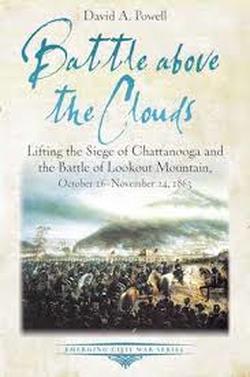
Mark J. Crawford
Savas Beatie, 2017, 190 pp., $18.95
ISBN: 978-1-61121-352-2
Image courtesy of amazon.com
When it comes to the study of Civil War history, there are certain battles which garner more attention than others. Mostly, the studies aimed at Gettysburg, Antietam, Fredericksburg, and even Vicksburg far outshine some of the other fields of glory. Confederate Courage on Other Fields is Mark J. Crawford’s answer to that sentiment by using four locations in order to tell tales of incredible leadership from the Confederate commanders. Events such as the Battle of Dinwiddle Courthouse, stories from Missouri, and lesser known areas, are given the just treatment here in this work. Not only does the book show the stories of these commanders and soldiers, it details lesser known places which badly need attention.
Mark J. Crawford has spent most of his life as an exploration geologist. For eighteen years, he prowled forests and deserts mainly in the southeast. There, he researched this book, which not only showed him the stories which the earth can tell, but also by visiting some of the descendants of these soldiers, and driving up dirt roads. He has written four other works, including, The Encyclopedia of the Mexican-American War.
As stated in the introduction, this book strives to take four events that are not fully covered in the Civil War realm of scholarship, and use them to tell stores of valor from Confederates, both officers and soldiers. The book opens with the Battle of Dinwiddle Courthouse in Virginia which preceded the Battle of Five Forks. While the chapter was fascinating in the narrative, the most interesting, and disturbing part, was the tale of the troops which were swept away with the river, some of them drowning in the attempt to get across. The second section he devotes his writing to is from the letters of a man named Charles Blacknail. His story is that of a plantation owner who became a Confederate officer. The letter writing shown in this section of the book highlights the overall problem of being driven and consumed by the war at hand. The next portion of the work is dedicated to a struggle between officers from both sides in which President Lincoln had to become involved. Mainly taking place in Missouri, these two men’s quarrels greatly affected those around them more so than they would like to admit. The last section of the book deals with one of the hospitals in North Carolina and Reverend M.M. Marshall. The narrative deals with the ways in which he tended to the soldiers while they were in that place, attempting to heal, or preparing themselves to die.
I highly recommend this book to anyone who enjoys human interest stories. This book not only shows some of the human side of the conflict, but the overall humanity which these soldiers faced. Too many books rely on the maneuvers and overall battles which were fought in the war, but this one pinpoints the stories which touch at the heart of the conflict; these stories show the side of a conflict that we rarely see and the reasoning behind their motivations. Highly Recommended!





 RSS Feed
RSS Feed
